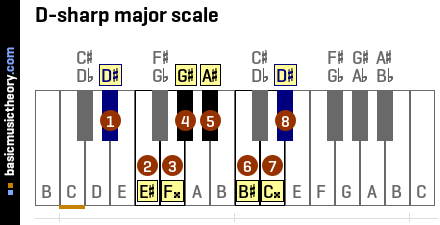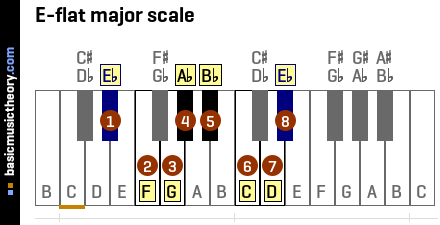https://www.beatport.com/genre/psy-tran ... e=1&key=29
However, after Googling it seems this scale doesn't actually exist and if it does it's the following:

On this image the E & F are pressed simultaneously and the same with the B &C.
So if one was to compose in this scale are there 6 notes or 8? (ie, will E&F and B&C always be played together?)
BTW, I'm sure the experts will laugh at my lack of knowledge but I'm trying to learn
Essentially I'd like to know what notes I should focus on in my piano roll to create a track in D# Maj.




